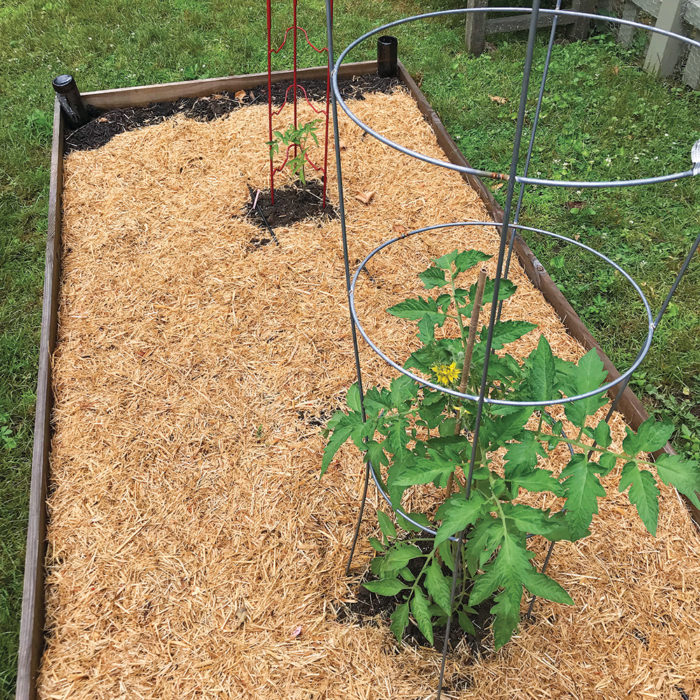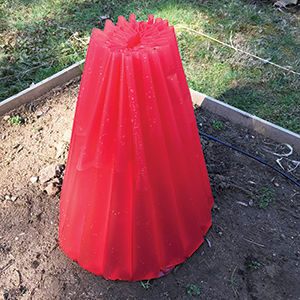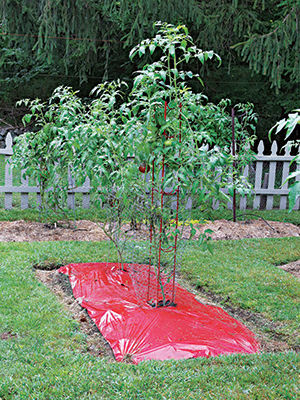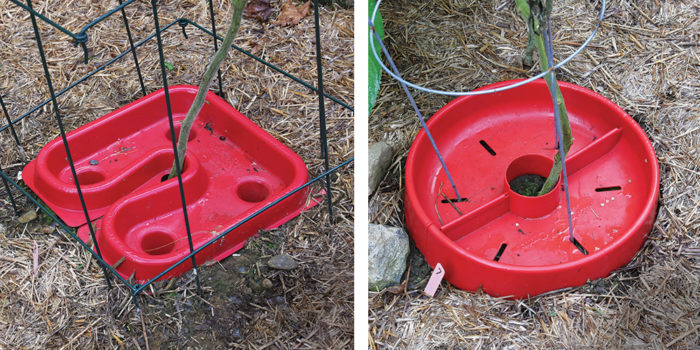A Review of Tomato Gadgets
Our editors put several products to the test to see if they could facilitate a bigger harvest

When it comes to growing tomatoes, everyone wants to grow the first, the biggest, and the most. And while growing tomatoes isn’t that hard, numerous pitfalls and setbacks can beset any gardener on a quest for an abundant harvest. To help avoid some of those troubles, gardeners might turn to any number of products available that promise anything from earlier and longer harvests to quicker ripening and easier cultivation.
The big question about these products is “Are they worth the money?” To answer that, we trialed several of them in our test garden to see what happened. When interpreting our results, keep in mind two things. First, this was not a scientific test with replication and peer review. Second, the year we tested these products was a terrible year for tomatoes: summer was cool, moist, and gray. It was a great year for late blight, however.
We grew some plants (we chose ‘Cherokee Purple’) with the products and some without. No special care was given to any plant, and we used the products the way they were intended. We evaluated these items on the only criteria that really matter: How many fruit resulted, and how big were they?
Season Extenders
Products tested
- Kozy Coats
- Pop-up tomato accelerator
- Wall o’ Water

Designed to insulate plants from cold temperatures, these products allow the plants to get a jump on settling into their home. Two of the products use tubes of water to surround the plants, heating up with the early season sun and keeping the plants and soil warm overnight. Depending on the brand, they claim they will protect the plants to temperatures as low as 12°F.
The Kozy Coats and Wall o’ Water were the same except for color: one was red, the other light blue. We set them up around five weeks before tomatoes normally go out in our area and one week before we were to plant the tomatoes they would house. Filling them with water was tricky, but our solution was to get a large empty pot or a 5-gallon bucket to put inside so they wouldn’t fall in on themselves. Once we added water to the proper level, they stood just fine.
The one season extender that was different was the Pop-up tomato accelerator. Rather than using water to insulate, it uses plastic. It was much easier to set up, but it has a zippered top that needs to be opened or closed to keep or reduce heat. That requires a smidge of extra effort. It is also much bigger than the others, which, we think, made it harder to keep warm. Its performance lagged a bit behind that of the others, but not enough to make it a deal breaker.
After letting the soil warm up for a week, we transplanted the tomato plants and essentially walked away. We watered as needed until our frost date had passed, then we removed the products the same day as we transplanted all our other seedlings. The results were striking. Our transplants were planted deeply and looked like mere 6- to 8-inch-tall shoots. The plants that were under the season extenders were at least twice that size and wonderfully branched out.
Ultimately, the plants that started under the season extenders flowered well before the other plants, and we began harvesting four weeks earlier than we did from the plants that were not grown with the season extenders.
Mulch

Product tested
- Red plastic mulch
The theory behind red plastic mulch is that the reflected red light helps tomatoes ripen faster and enhances overall plant growth. And as mulch, it suppresses weeds and retains moisture, too. We found this product to be easy to apply, and it did a fine job of keeping weeds out and moisture in. We did not find any improved growth or ripening on the plants we grew in it, however. As noted earlier, ours was not the sunniest of summers, so perhaps that had something to do with it. It certainly did no harm in reflecting red light—which is essential for growth—back onto the plants.
Watering help
Products tested
- Automator Tomato Tray
- Tomato Halo
- Tomato Crater

These products are designed to channel water directly to a plant’s roots while also suppressing weeds and thwarting cutworms. All three products tested were easy to install, and we had no problems with weeds or cutworms (neither did any of the other plants, for that matter). And while all the other tomato plants relied on drip irrigation for their water, these required hand watering. This method of delivering water is notoriously unreliable, and it is probably what contributed to the performance of the plants in these devices being slightly below that of the control plants.
Sources
- Gardener’s Edge, Piqua, OH; gardenersedge.com; 888-556-5676
- Gardener’s Supply, Burlington, VT; gardeners.com; 800-876-5520






Comments
Log in or create an account to post a comment.
Sign up Log in